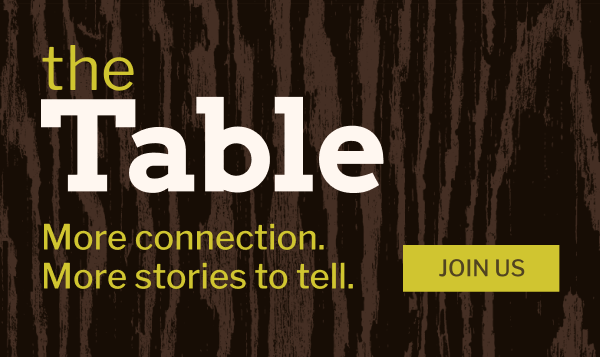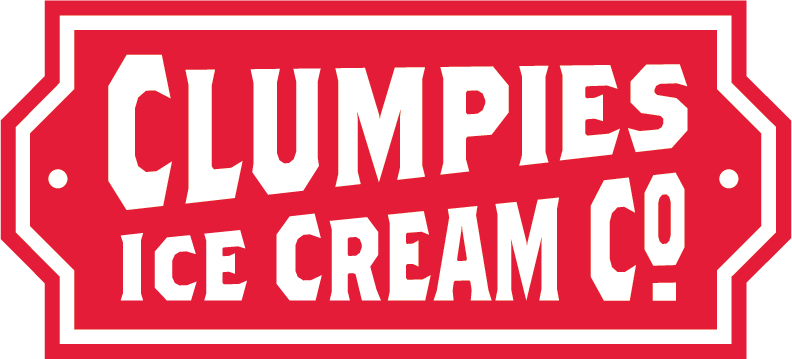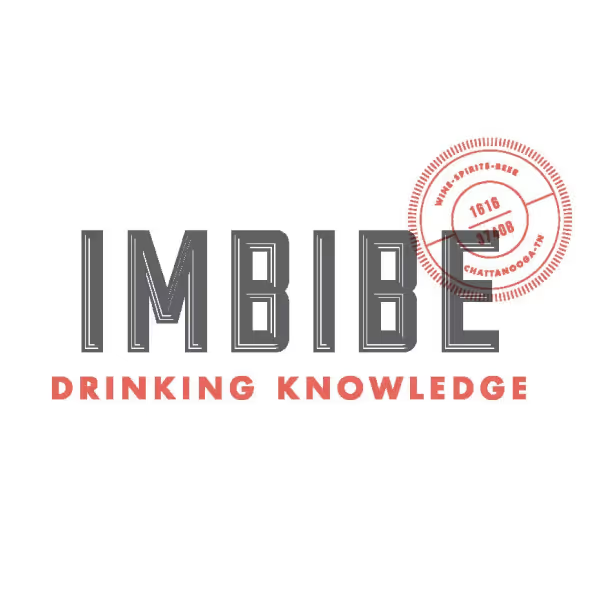
Three People Feeding Thousands: a Loaves, Fishes and Food Bank Story
Welcome to the Food Bank's logistics team.
Food as a verb thanks
for sponsoring this series

It is a normal weekday morning, and we are standing in the middle of one of the most important places within east Tennessee, north Georgia and north Alabama.
Take a guess.
A mayor's office? Some regional economic powerhouse or chamber of commerce?
Nope. It's the loading dock at the Chattanooga Area Food Bank.

Here, we find the headquarters for a logistical system that receives and then delivers tens of millions of pounds of food to families, widows, neighbors and citizens across 20 counties.
It's a logistical system that stretches from Amnicola Highway to Minnesota to Canada to Florida.
It's also a logistical system that resembles the Gospel loaves and fishes: thousands and thousands of people fed by just a few hands.
It all originates in the tiniest of offices, high above the loading dock.
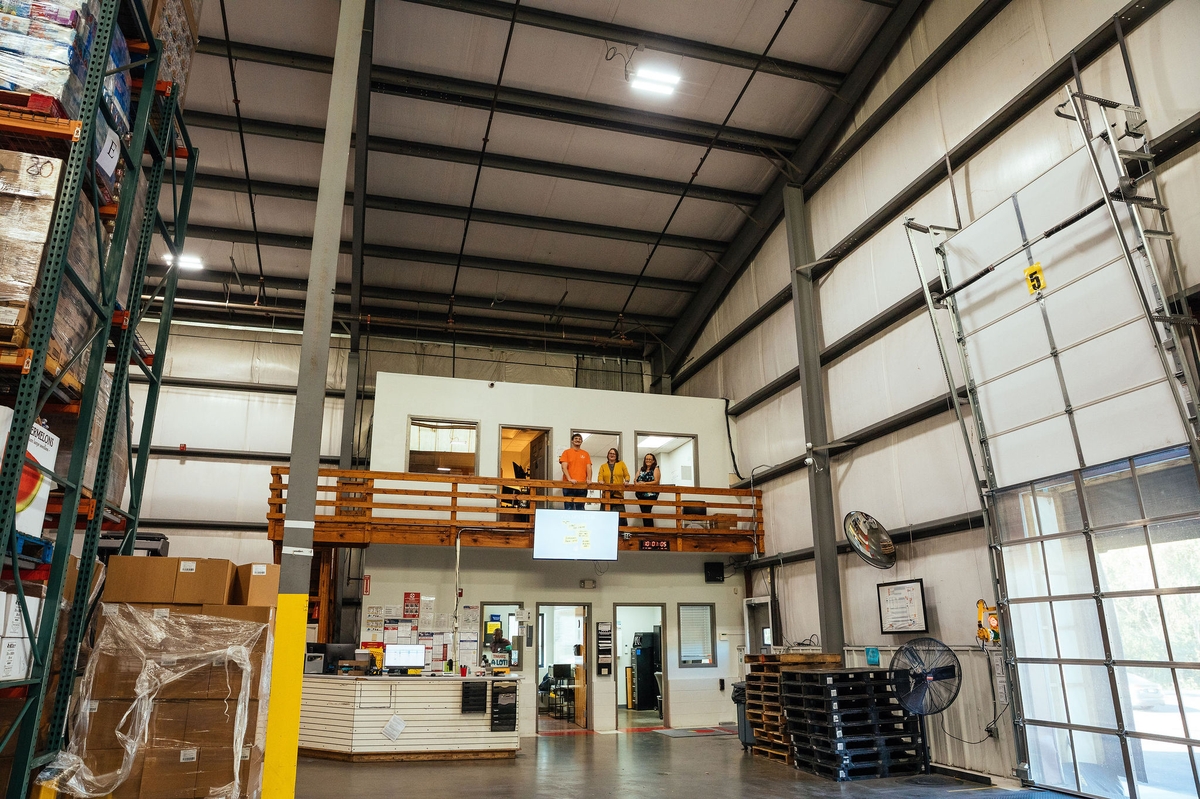
But first, before we enter that office, let's look on the ground.
Like every weekday morning, a driver beep-beep-beep backs up his box truck, unloading pallets of food.
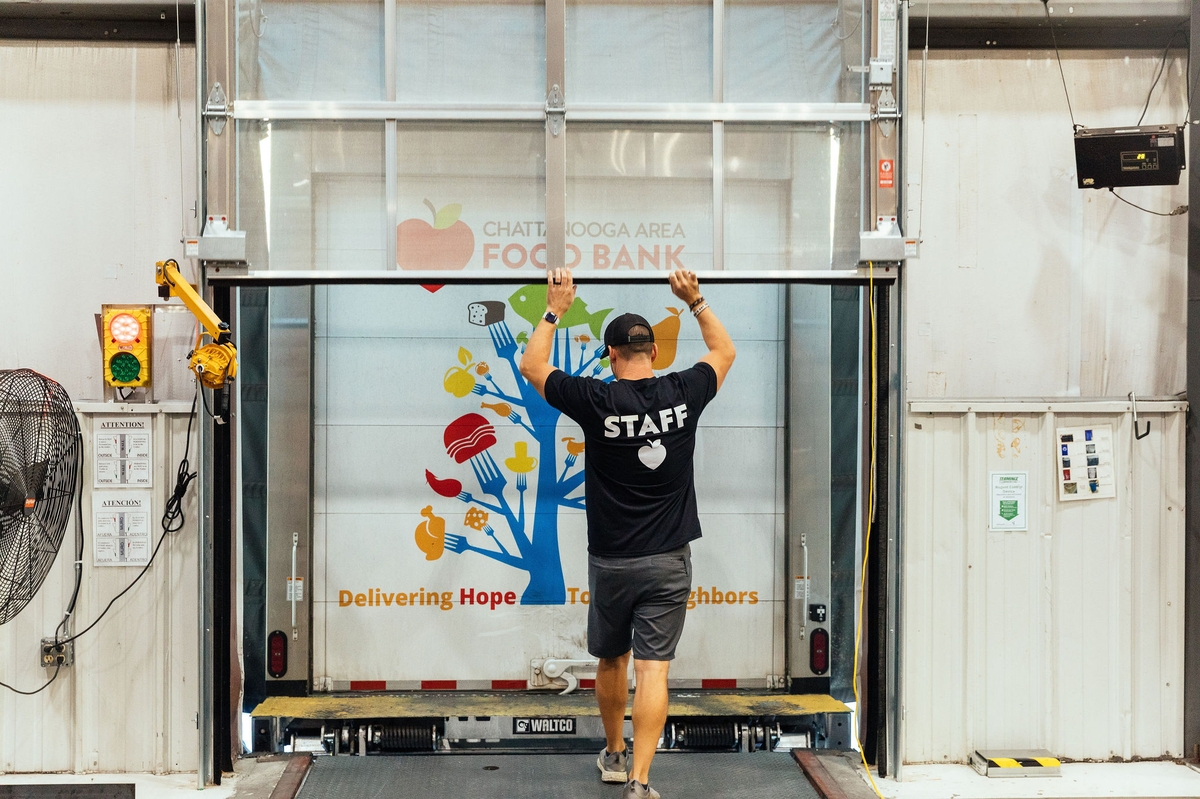
Grapes, kale, raw chicken, Monster drinks, ice cream, bananas, cupcakes, eggs, croissants, Waterloo, Mtn. Dew, French bread, blueberries and baby spinach.
All given away from multiple corporate partners.
He began his route before the sun rose, making stops at multiple big-box stores across the city.
Dollar General. Publix. Whole Foods. Food City. Sam's and Cosco. Walmart.
Earphones in, he weighs the truckload: 716 pounds.
What are you listening to?
"Korn," he said, smiling.
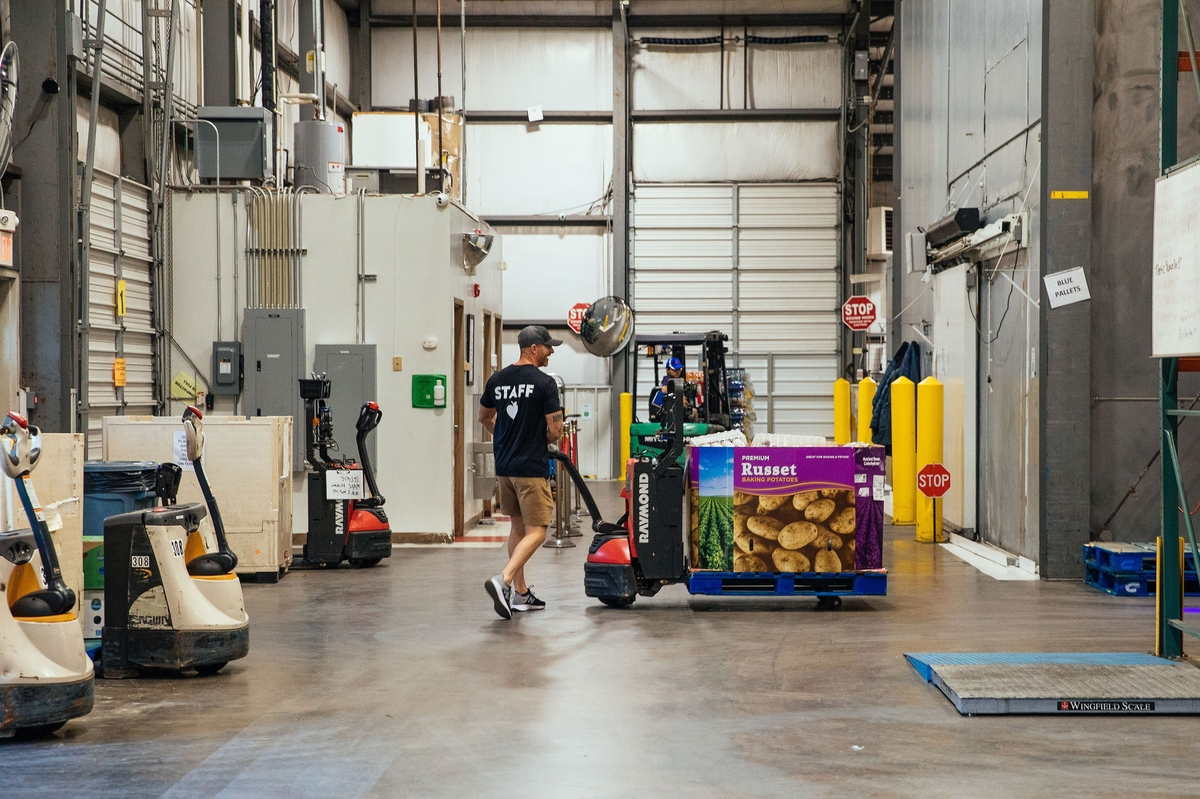
Nearby, yesterday's delivery: a stack of nearly 50 pallets, stacked in rows probably 12' high. A tractor trailer — not a small box truck, but a big 18-wheeler — dropped off an entire shipment of breakfast bars and boxes of Cheerios.
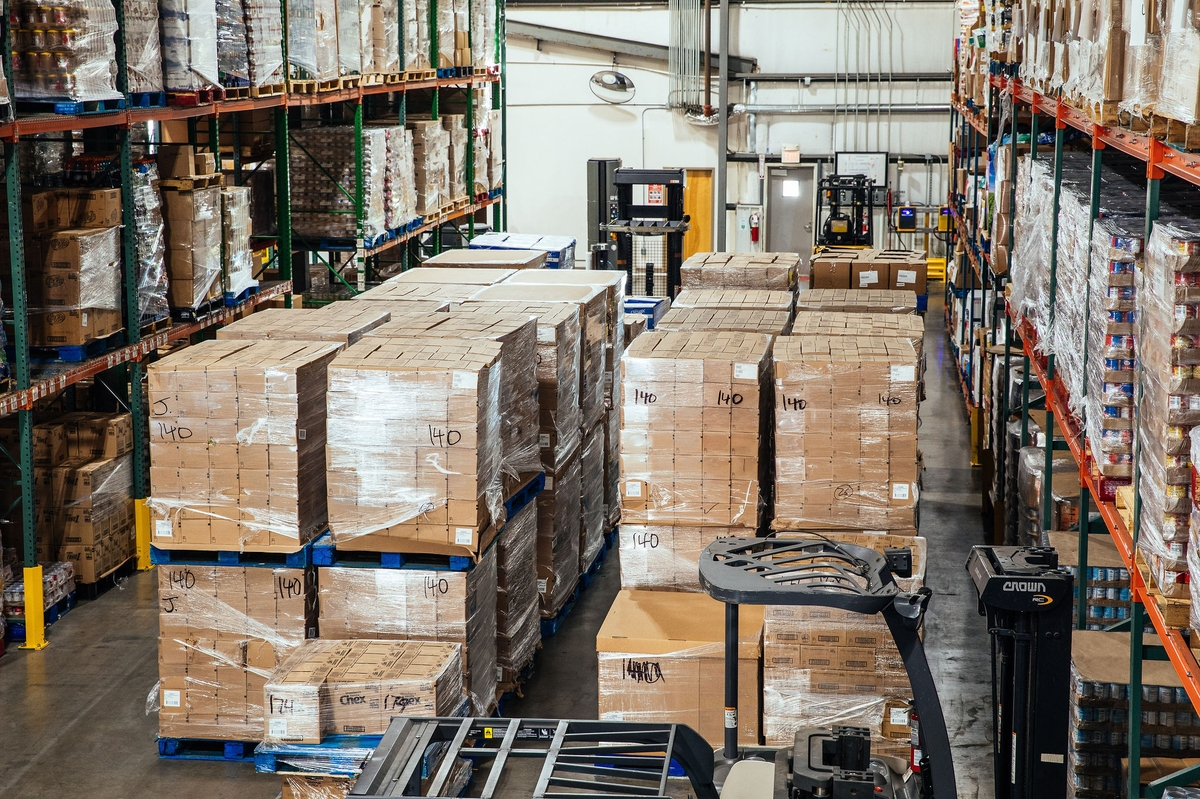
Now, widen the lens even more. Imagine an entire warehouse — some 40,000 square feet, like a football field of food — all full of floor to near-ceiling food. Perishables kept cool in walk-in freezers. Nonperishable stacked high. Millions and millions of pounds.
If deliveries stopped coming in, the place would be bare bones empty within a month.
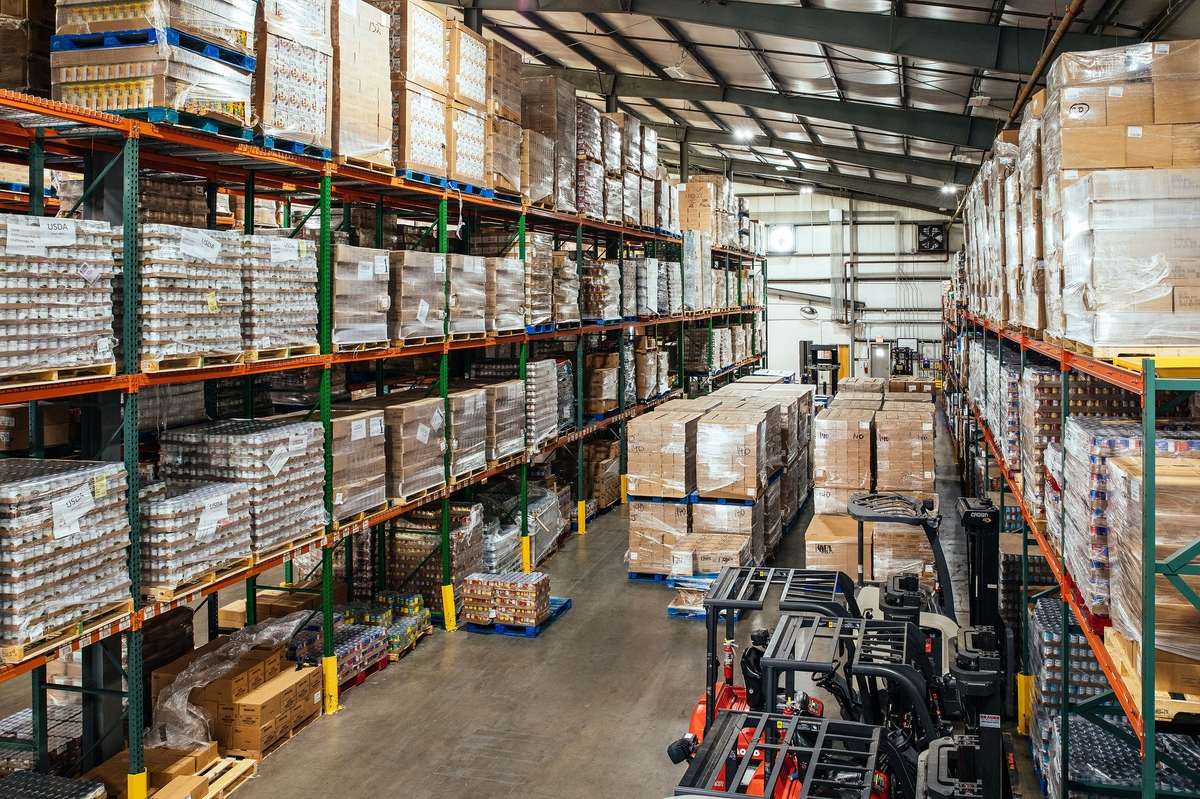
In this town known for its logistics industry, don't overlook the logistical magnitude of feeding tens of thousands of people.
- Our Chattanooga Food Bank serves men, women and children in 20 counties.
- In 2024, the Food Bank served nearly 17 million meals.
- In 2024, the Food Bank hit record need, only to be surpassed by 2025, with federal loss of funding, grant elimination and government shutdown.
- In 2024, the Food Bank made more than 1700 deliveries to its more than 250 hunger relief partners.
This equates to an enormous, breathtaking amount of food and logistical coordination. You think your Thanksgiving is difficult to manage?
Try serving 17 million meals across 20 counties.
And canned food drives?
They barely make a dent. (More on this in a moment.)
The brainstem of this logistical concerto originates in one tiny room with four computer screens and three very devoted employees.

"So many things happen in this room," said Ashley Morton, food procurement and operations manager. "Everything goes through this office."

Let's start with Niki Shuman, retail food rescue coordinator, who works with hundreds of corporate and retail stores.
"It's my job to play matchmaker, to pair each individual store with hunger relief partners nearby," she said.
An example: Dollar General is the latest corporate partner to sign on with the Food Bank. So, Niki travels to different stores, meeting with managers there to discuss the process, which looks like this:
Dollar General employees will pull items a few days before expiration dates; a Food Bank truck will arrive, or a local food pantry — think church or nonprofit — will come to pick up.
"When I started, we had 87 retail stores," said Niki.
Today, she works with 239 retail stores.

Each month, the Food Bank acquires more than 500,000 pounds of donated food from corporate and retail partners, like Food City and Cosco.
How much last year? Ashley begins clicking spreadsheets.
"Retail donations totaled 6.2 million pounds," she said.
Fresh food and produce? Meet Bronson Patrick, inventory and compliance coordinator who also secures relationships with regional farmers.
"He deals directly with local farmers distributing directly to partners," Ashley said.
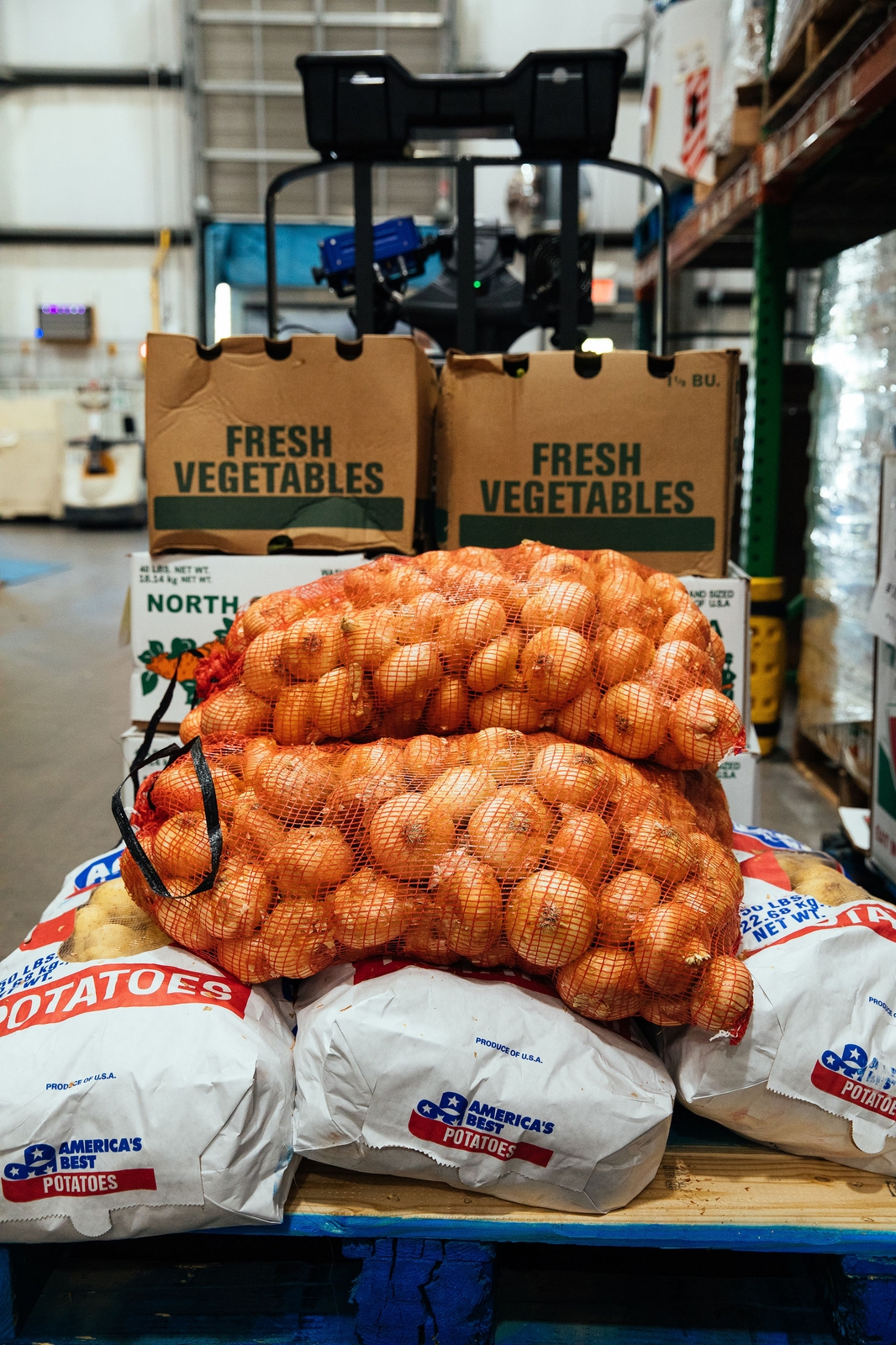
"The middleman between our farmers and agency partners," Bronson said.
The Local Food Purchase Assistance Program was — until the federal government suspended it — one of the best multiple-problems-solved programs around. The federal government would help fund food banks as they purchased food at market prices from regional family farms.
Farmers get a dependable and fair revenue stream.
And local families get fresh food, like apples, honey and farm-raised beef, some of which they have not eaten in years.
Bronson works with seven regional farms, acquiring approximately 20,000 pounds of farm-grown food each month.
Since June 2024, he has purchased more than $260,000 from regional farmers.
"I love being a service to my community and having a purpose," he said.
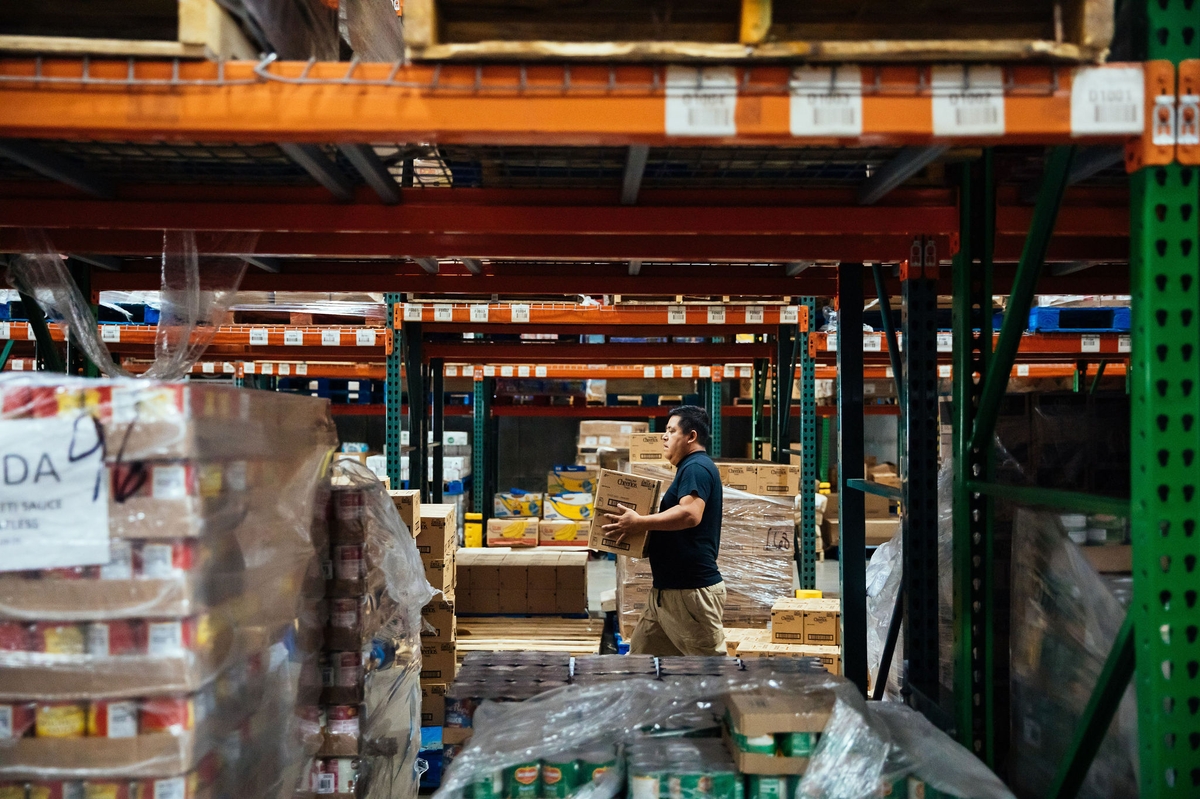
This brings us to Ashley, who oversees a $6 million annual budget — of every dollar spent, 96 cents goes to food purchasing — with one big goal: to purchase the most appropriate food at the best price.
"I really buy everything else," she said.
From coast to coast, Ashley has relationships with food banks, corporate partners and food brokers.
Each week, she purchases tractor-trailer loads of food from across the continent. It begins locally: McKee Foods, Coca Cola, Pepsi, Kroger.
"Right now, I"m ordering additional produce," she said.
From down the road?
She smiled.
"From Indiana."

She has connections in Canada. A text buzzes from a broker in Minnesota: I have a truck load of peanut butter. Do you want it?
How much?
18 cents per pound.
A food manufacturer discontinues a product? There's excess on the marketplace.
That full truckload of peanut butter, some 43,000 pounds, costs around $31,000. She'll buy full tractor trailer loads of spaghetti. Or — remember those pallets — cereal bars.
She recently bought entire truckloads of Campbell's soup at $1.02 per pound, some $31,000 for the entire shipment.
"Chunky chicken noodle," she said. "We're going into cold and flu season. Everybody needs soup."
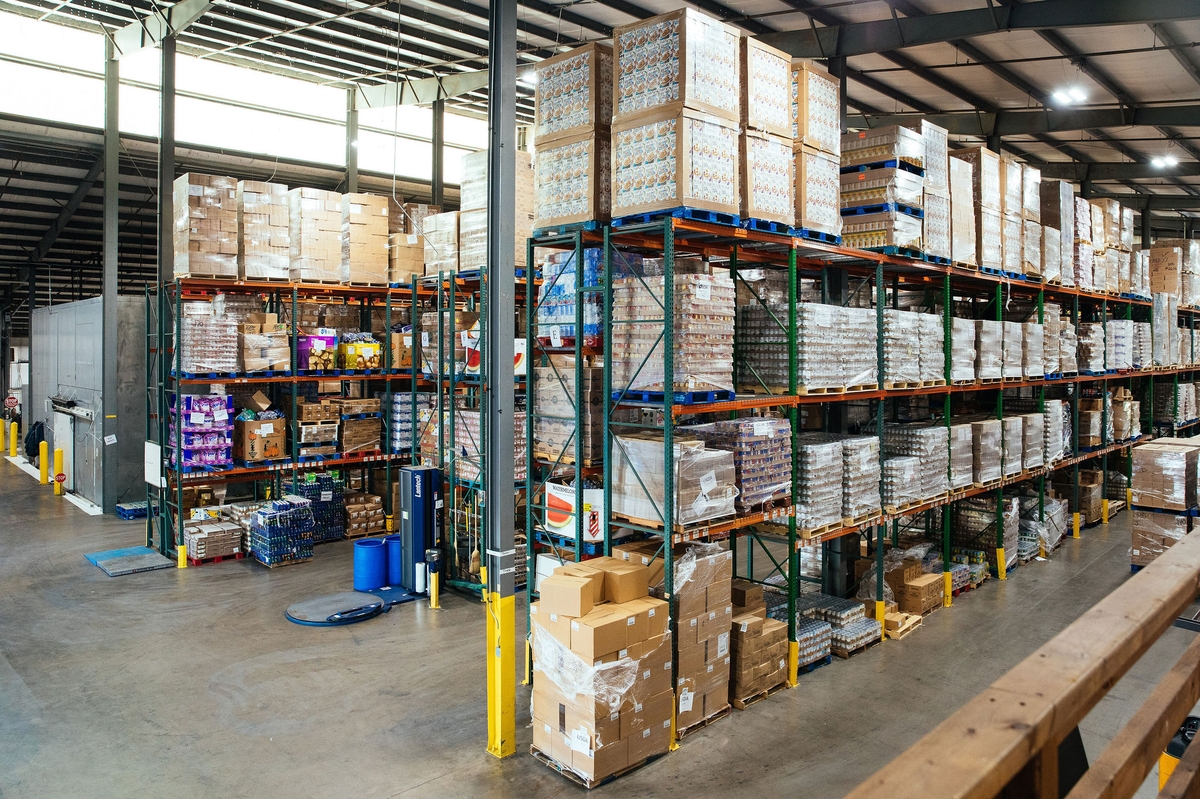
"Last year, I bought 1,074 truckloads," she said.
Then, her team registers all this food for their hunger relief partners — like nonprofits, food pantries and churches — who can shop for food online.
The Food Bank has an inventory — think Amazon — of nearly 200 pages, with 26 items per page. Nonprofits order — two dozen orders can come in a single day — food at steeply discounted rates, some of it even free.
Chili with beans. Plums, sweet potatoes and cantalope. Apples. Macaroni & cheese, cases of frozen chicken, applesauce and mozzarella.
"Our drive team will deliver it," she said.
She tries to purchase nutritionally-dense, long-lasting food that honors dietary preferences.
She's got her eye on the constant fulfillment of super boxes, a holy grail of food: tuna or canned chicken, peanut butter, pasta, pasta sauce, rice, dried beans and family-sized milk.
So, how much do canned food drives contribute?
"It might fill one truck," she said.

Take all the canned food drives that people and groups generously organize. We all imagine it keeps the Food Bank thriving, right?
Total for food drives in 2024?
Some 238,099 pounds.
How many pounds of food did the Food Bank distribute in 2024?
"We distributed 20.3 million pounds," Ashley said.
Canned food drives represent less than two percent of the Food Bank's needs.
"I don't think people understand what happens," she said. "They think if they donate to a food drive, we'll be fine."
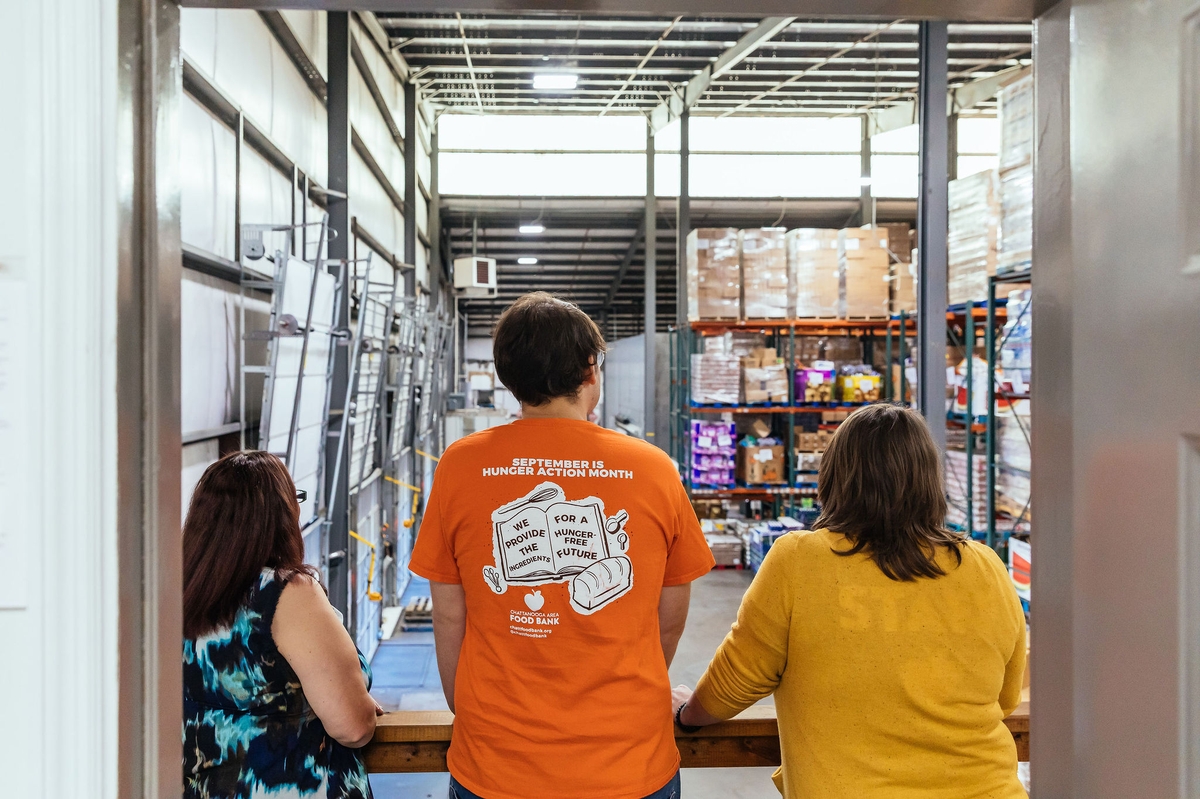
This morning, just like yesterday, just like tomorrow, tens of thousands of people across 20 counties will experience life without enough food.
And this morning, like yesterday and tomorrow, the Food Bank will step in as first responders, offering a safety net beyond what any government is providing.
It starts in one tiny office with three dedicated people.
"I love doing this," Ashley said.
Remembering something that CEO Melissa Blevins likes to say, Niki smiled.
"Taking care of people is my love language," she said.
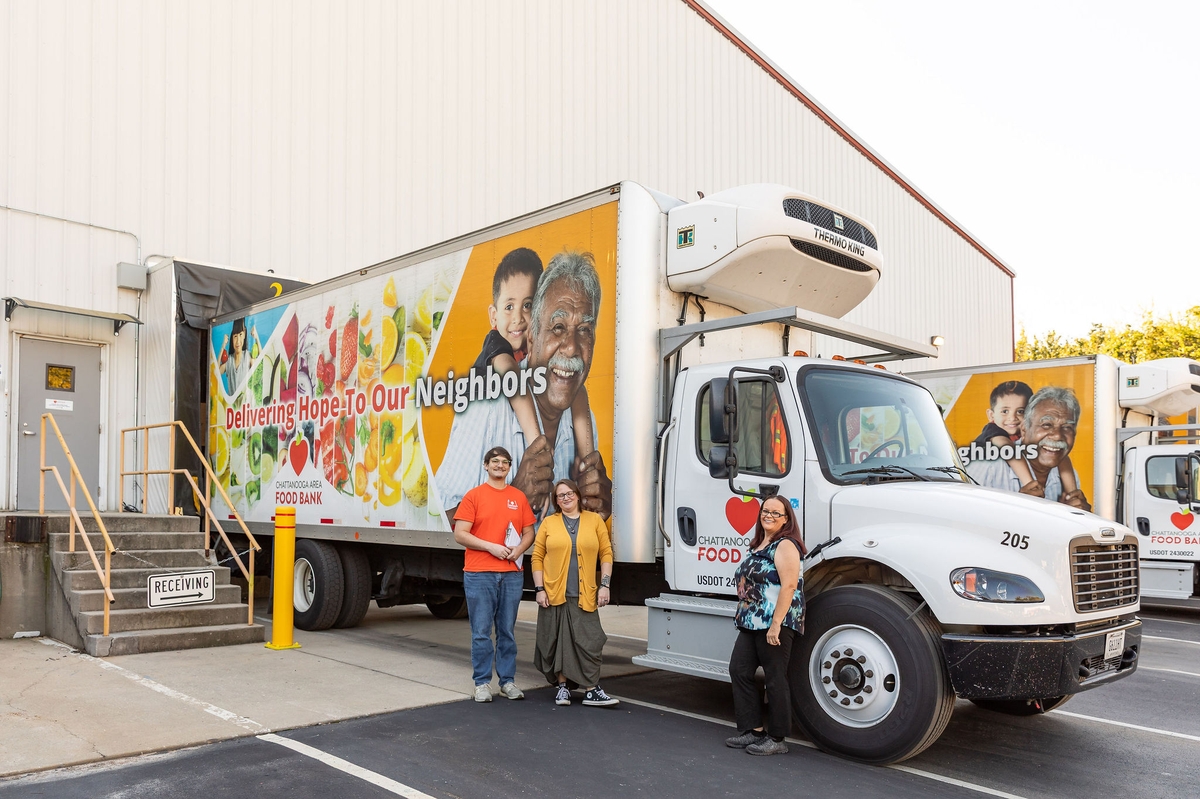
Story ideas, questions, feedback? Interested in partnering with us? Email: david@foodasaverb.com
This story is 100% human generated; no AI chatbot was used in the creation of this content.
It is a normal weekday morning, and we are standing in the middle of one of the most important places within east Tennessee, north Georgia and north Alabama.
Take a guess.
A mayor's office? Some regional economic powerhouse or chamber of commerce?
Nope. It's the loading dock at the Chattanooga Area Food Bank.

Here, we find the headquarters for a logistical system that receives and then delivers tens of millions of pounds of food to families, widows, neighbors and citizens across 20 counties.
It's a logistical system that stretches from Amnicola Highway to Minnesota to Canada to Florida.
It's also a logistical system that resembles the Gospel loaves and fishes: thousands and thousands of people fed by just a few hands.
It all originates in the tiniest of offices, high above the loading dock.

But first, before we enter that office, let's look on the ground.
Like every weekday morning, a driver beep-beep-beep backs up his box truck, unloading pallets of food.

Grapes, kale, raw chicken, Monster drinks, ice cream, bananas, cupcakes, eggs, croissants, Waterloo, Mtn. Dew, French bread, blueberries and baby spinach.
All given away from multiple corporate partners.
He began his route before the sun rose, making stops at multiple big-box stores across the city.
Dollar General. Publix. Whole Foods. Food City. Sam's and Cosco. Walmart.
Earphones in, he weighs the truckload: 716 pounds.
What are you listening to?
"Korn," he said, smiling.

Nearby, yesterday's delivery: a stack of nearly 50 pallets, stacked in rows probably 12' high. A tractor trailer — not a small box truck, but a big 18-wheeler — dropped off an entire shipment of breakfast bars and boxes of Cheerios.

Now, widen the lens even more. Imagine an entire warehouse — some 40,000 square feet, like a football field of food — all full of floor to near-ceiling food. Perishables kept cool in walk-in freezers. Nonperishable stacked high. Millions and millions of pounds.
If deliveries stopped coming in, the place would be bare bones empty within a month.

In this town known for its logistics industry, don't overlook the logistical magnitude of feeding tens of thousands of people.
- Our Chattanooga Food Bank serves men, women and children in 20 counties.
- In 2024, the Food Bank served nearly 17 million meals.
- In 2024, the Food Bank hit record need, only to be surpassed by 2025, with federal loss of funding, grant elimination and government shutdown.
- In 2024, the Food Bank made more than 1700 deliveries to its more than 250 hunger relief partners.
This equates to an enormous, breathtaking amount of food and logistical coordination. You think your Thanksgiving is difficult to manage?
Try serving 17 million meals across 20 counties.
And canned food drives?
They barely make a dent. (More on this in a moment.)
The brainstem of this logistical concerto originates in one tiny room with four computer screens and three very devoted employees.

"So many things happen in this room," said Ashley Morton, food procurement and operations manager. "Everything goes through this office."

Let's start with Niki Shuman, retail food rescue coordinator, who works with hundreds of corporate and retail stores.
"It's my job to play matchmaker, to pair each individual store with hunger relief partners nearby," she said.
An example: Dollar General is the latest corporate partner to sign on with the Food Bank. So, Niki travels to different stores, meeting with managers there to discuss the process, which looks like this:
Dollar General employees will pull items a few days before expiration dates; a Food Bank truck will arrive, or a local food pantry — think church or nonprofit — will come to pick up.
"When I started, we had 87 retail stores," said Niki.
Today, she works with 239 retail stores.

Each month, the Food Bank acquires more than 500,000 pounds of donated food from corporate and retail partners, like Food City and Cosco.
How much last year? Ashley begins clicking spreadsheets.
"Retail donations totaled 6.2 million pounds," she said.
Fresh food and produce? Meet Bronson Patrick, inventory and compliance coordinator who also secures relationships with regional farmers.
"He deals directly with local farmers distributing directly to partners," Ashley said.

"The middleman between our farmers and agency partners," Bronson said.
The Local Food Purchase Assistance Program was — until the federal government suspended it — one of the best multiple-problems-solved programs around. The federal government would help fund food banks as they purchased food at market prices from regional family farms.
Farmers get a dependable and fair revenue stream.
And local families get fresh food, like apples, honey and farm-raised beef, some of which they have not eaten in years.
Bronson works with seven regional farms, acquiring approximately 20,000 pounds of farm-grown food each month.
Since June 2024, he has purchased more than $260,000 from regional farmers.
"I love being a service to my community and having a purpose," he said.

This brings us to Ashley, who oversees a $6 million annual budget — of every dollar spent, 96 cents goes to food purchasing — with one big goal: to purchase the most appropriate food at the best price.
"I really buy everything else," she said.
From coast to coast, Ashley has relationships with food banks, corporate partners and food brokers.
Each week, she purchases tractor-trailer loads of food from across the continent. It begins locally: McKee Foods, Coca Cola, Pepsi, Kroger.
"Right now, I"m ordering additional produce," she said.
From down the road?
She smiled.
"From Indiana."

She has connections in Canada. A text buzzes from a broker in Minnesota: I have a truck load of peanut butter. Do you want it?
How much?
18 cents per pound.
A food manufacturer discontinues a product? There's excess on the marketplace.
That full truckload of peanut butter, some 43,000 pounds, costs around $31,000. She'll buy full tractor trailer loads of spaghetti. Or — remember those pallets — cereal bars.
She recently bought entire truckloads of Campbell's soup at $1.02 per pound, some $31,000 for the entire shipment.
"Chunky chicken noodle," she said. "We're going into cold and flu season. Everybody needs soup."

"Last year, I bought 1,074 truckloads," she said.
Then, her team registers all this food for their hunger relief partners — like nonprofits, food pantries and churches — who can shop for food online.
The Food Bank has an inventory — think Amazon — of nearly 200 pages, with 26 items per page. Nonprofits order — two dozen orders can come in a single day — food at steeply discounted rates, some of it even free.
Chili with beans. Plums, sweet potatoes and cantalope. Apples. Macaroni & cheese, cases of frozen chicken, applesauce and mozzarella.
"Our drive team will deliver it," she said.
She tries to purchase nutritionally-dense, long-lasting food that honors dietary preferences.
She's got her eye on the constant fulfillment of super boxes, a holy grail of food: tuna or canned chicken, peanut butter, pasta, pasta sauce, rice, dried beans and family-sized milk.
So, how much do canned food drives contribute?
"It might fill one truck," she said.

Take all the canned food drives that people and groups generously organize. We all imagine it keeps the Food Bank thriving, right?
Total for food drives in 2024?
Some 238,099 pounds.
How many pounds of food did the Food Bank distribute in 2024?
"We distributed 20.3 million pounds," Ashley said.
Canned food drives represent less than two percent of the Food Bank's needs.
"I don't think people understand what happens," she said. "They think if they donate to a food drive, we'll be fine."

This morning, just like yesterday, just like tomorrow, tens of thousands of people across 20 counties will experience life without enough food.
And this morning, like yesterday and tomorrow, the Food Bank will step in as first responders, offering a safety net beyond what any government is providing.
It starts in one tiny office with three dedicated people.
"I love doing this," Ashley said.
Remembering something that CEO Melissa Blevins likes to say, Niki smiled.
"Taking care of people is my love language," she said.

Story ideas, questions, feedback? Interested in partnering with us? Email: david@foodasaverb.com
This story is 100% human generated; no AI chatbot was used in the creation of this content.


